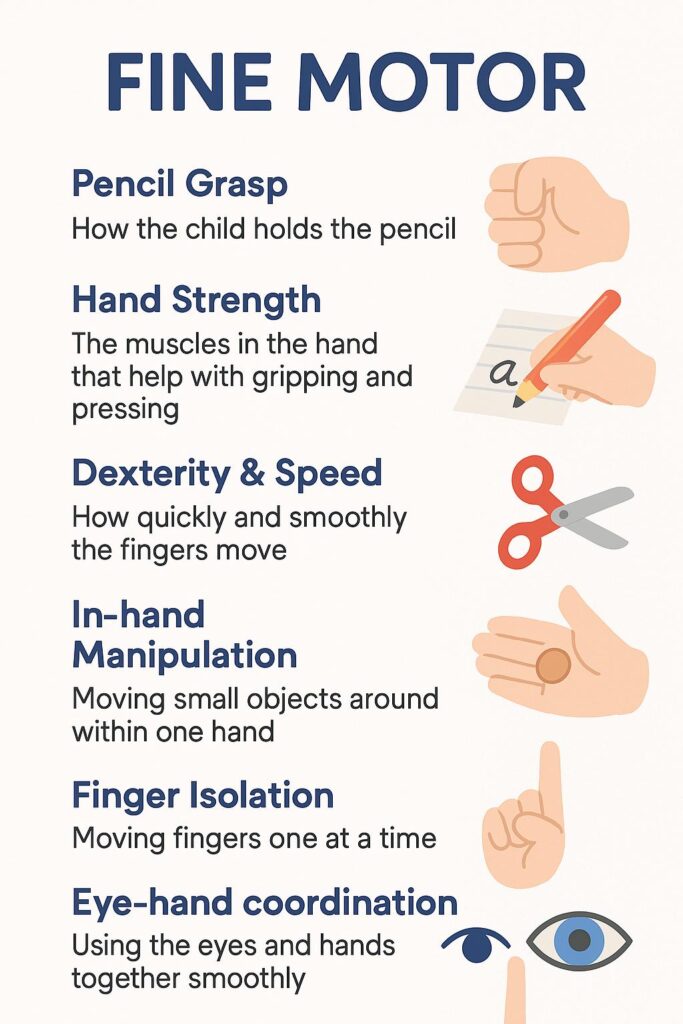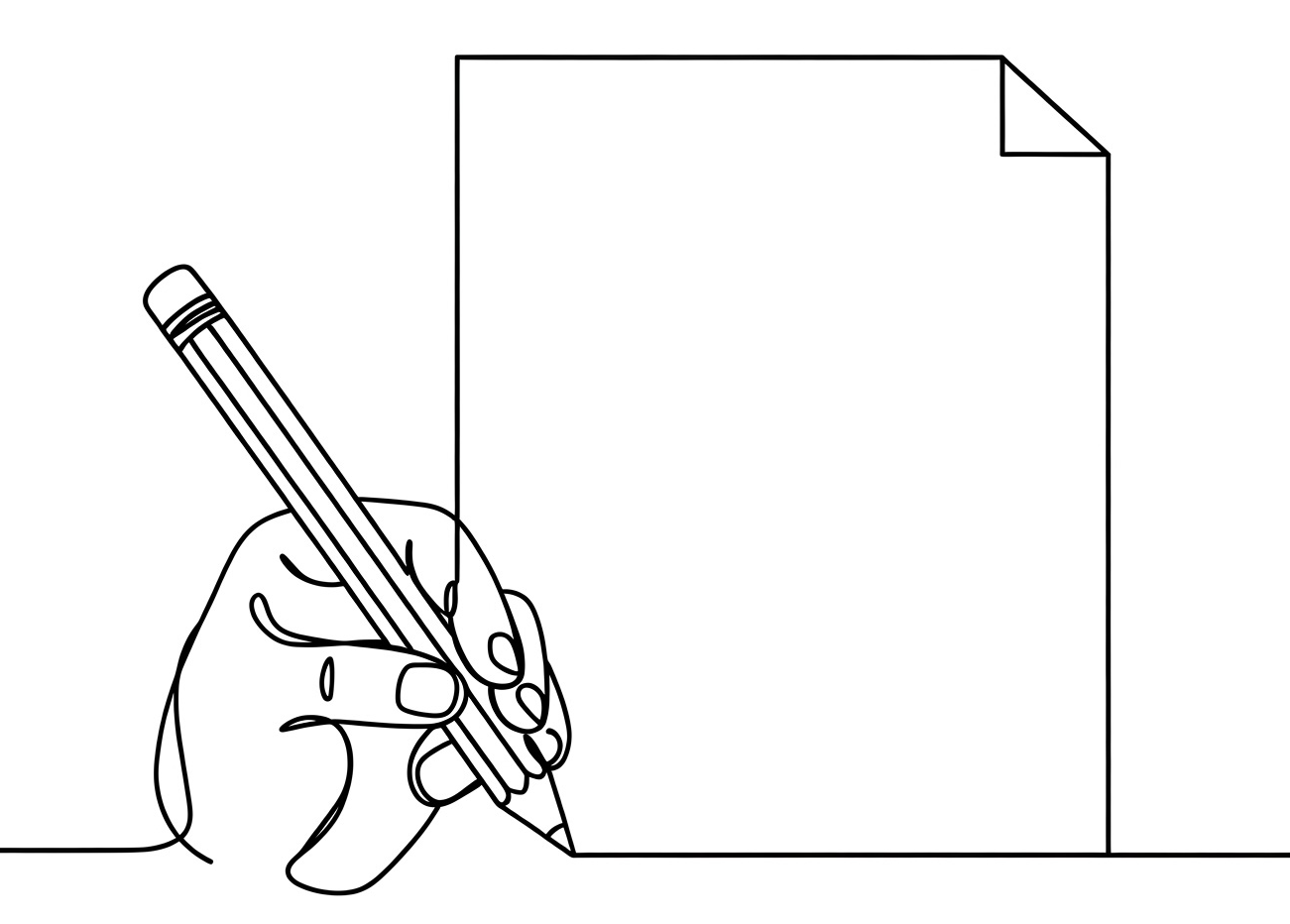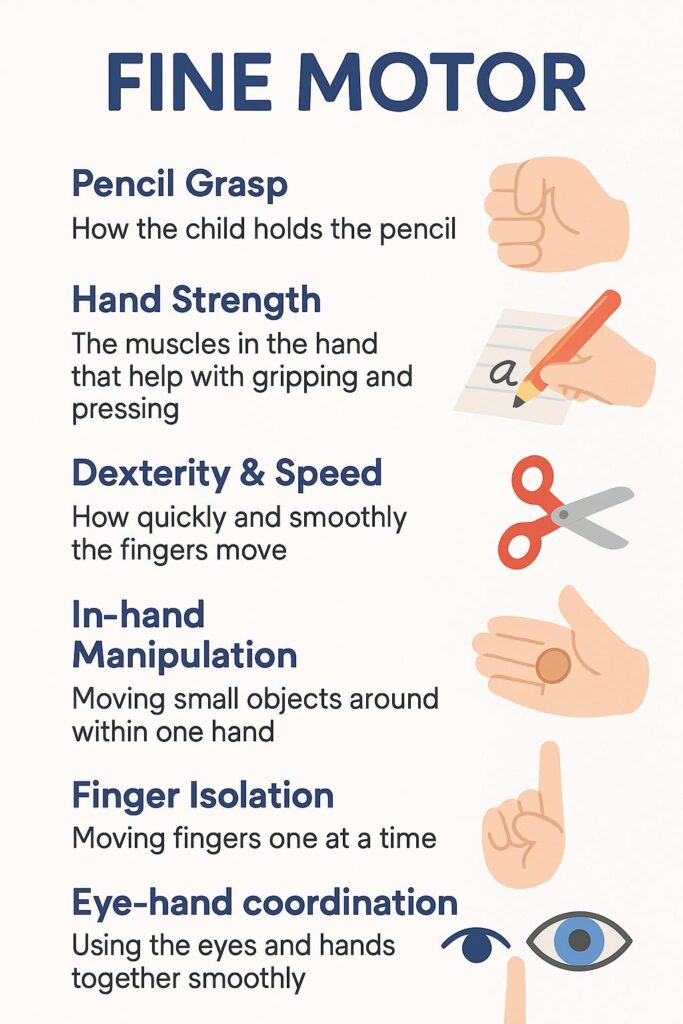Fine motor skills are the small movements we make with our hands and fingers. These skills are essential for young children to learn how to write, color, cut, and use school tools.
When fine motor skills are still developing or weak, handwriting can be:
- Messy or slow
- Hard to read
- Frustrating or tiring for the child
- Incomplete or avoided altogether

Below are key fine motor sub-skills that affect handwriting:
Pencil Grasp
- What it means: How the child holds the pencil.
- How it affects handwriting: A poor grasp can make writing uncomfortable, slow, or hard to control. Kids may press too hard, get tired quickly, or have messy letters that don’t sit on the line.
Hand Strength
- What it means: The muscles in the hand that help with gripping and pressing.
- How it affects handwriting: Weak hands can make writing feel exhausting. A child may not be able to write for long, or they may press too lightly or too hard, making letters hard to read.
Dexterity & Speed
- What it means: How quickly and smoothly the fingers move.
- How it affects handwriting: If a child’s fingers are stiff or slow, it can make writing tiring and time-consuming. Letters may look wobbly or shaky. Some children sacrifice speed for improved letter formation. This may make note taking or writing very slow.
Cutting
- What it means: Using scissors with control.
- How it affects handwriting: Cutting strengthens hand muscles and helps both hands work together. These skills transfer directly to better pencil control and coordination for writing.
Side Dominance
- What it means: Having a clear “worker†hand (left or right).
- How it affects handwriting: If a child switches hands or doesn’t have a clear dominant side, their writing may be inconsistent, slower, or awkward. A strong, preferred hand supports steady progress in writing.
In-hand Manipulation
- What it means: Moving small objects around within one hand.
- How it affects handwriting: This skill helps kids shift a pencil into position, pick up and turn a paper, or adjust pressure without using their other hand. Poor in-hand manipulation can lead to clumsy or inefficient writing.
Handwriting
- What it means: Combining all fine motor skills to form letters and words on the page.
- How it affects handwriting: This is the end result. Weakness in any fine motor skill can lead to letters that are too big, backwards, poorly spaced, or hard to read.
Finger Isolation
- What it means: Moving fingers one at a time.
- How it affects handwriting: This helps with pencil control and forming specific strokes (like circles or diagonals). Children who “drag†their whole hand may lack finger isolation, making letter formation harder. For a true understanding of finger movement skills, your child will be asked to close their eyes.
Eye-Hand Coordination
- What it means: The ability to use your eyes and hands together smoothly.
- How it affects handwriting: A child may struggle to copy from the board, stay on the line, or space letters correctly if this skill is weak. Good eye-hand coordination is needed to write neatly and efficiently.

